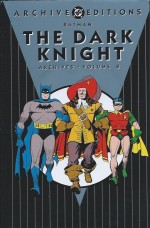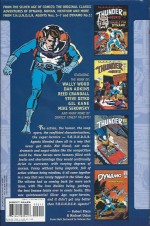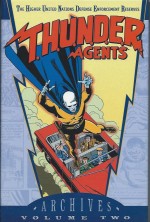
By M. R. James, illustrated by Rosalind Caldecott, selected & edited by Michael Cox (Tiger Books International)
ISBN: 978-1-85501-141-0
These days, thanks to cinema, television and latterly the internet, our deepest emotions are mostly prodded and provoked by creators through sound and most especially by visuals, but for the longest time artists got into our heads through words and pictures, letting our own imaginations do all the damage…
A truly Great British tradition is the Christmas Ghost Story and the art form – at least in its literary iteration – has never been better expressed than in the cool, dry, chillingly understated tales of scholar and cleric M. R. James.
A series of BBC TV adaptations appeared sporadically from the late 1960s onwards, thoroughly warping the unformed minds of a generation of kids like me and Mark Gatiss who, in fact, revived the tradition in 2013 with his dramatisation of The Tractate Middoth on December 25th 2013 with A Ghost Story for Christmas…
There are naturally plenty of compilations of the macabre master’s creepy canon – although as far as I’m aware, no complete collection yet – but a treasured favourite of mine, incorporating the majority of his most infamous spellbinders, is this copiously illustrated commemorative hardback from 1986 which also offers a series of superb, atmosphere-evoking yet sublimely understated pencil drawings from Rosalind Caldecott for each eerie episode.
So successful were M. R. James’ painfully small canon of stories that he has been given the honour of defining a genre. The “Jamesian†style revolves around and usually includes a familiar if bucolic setting such as an English hamlet, manorial estate or seaside town, ancient European edifices like an abbey or university library where quiet, naive bookish types finds antiquarian books or ancient artefacts and arouse the ire of something far better left dead and forgotten…
In this scholarly tome – befitting a man as well known for his educational, scholastic and ecumenical achievements as his horrorist hobby – the timeless terror tales are preceded by an epic and entrancing biography of Montague Rhodes James OM, MA, FBA (1862-1936) who, when not disturbing the dreams of a nation and empire, was a medieval researcher and latterly Provost of King’s College Cambridge and Eton College.
His life and works are here traced with meticulous precision in a photo-packed, illustration-augmented ‘Introduction by Michael Cox’ before begins a cavalcade of subdued, understated, ferociously evocative tales wherein comfortable elements of the ordinary and safely commonplace are over and again suddenly compromised by the relentless howling unknown…
The prose pilgrimage begins with ‘Canon Alberic’s Scrap-Book’ (first published in National Review, March 1895) as a student and collector of scriptural antiquities describes the close call he had when offered an illicit mediaeval manuscript volume. He had no qualms about purchasing the relic until he saw what was hidden at the back…
This is followed by the classic ‘Lost Hearts’ (debuting in Pall Mall Magazine, December 1895 and adapted into a TV masterpiece by Robin Chapman for the BBC’s Christmas top-slot in 1973) which describes how young orphan Stephen is adopted by his elderly cousin at a remote mansion. His extremely distant benefactor is obsessed with immortality but the truly disturbing problem is the frequent peripheral glimpses of a gypsy girl and Italian boy with holes in their chests…
A far more sedate yet equally sinister situation unfolds when a university museum curator acquires a rare artwork in ‘The Mezzotint’ (from Ghost Stories of an Antiquary, 1904). The local scene depicted seemingly changes whenever people look away and elements of the subtly shifting picture bear ghastly echoes of a local atrocity from years past…
From that same landmark anthology volume comes ‘The Ash-Tree’ which relates how the inheritor of an ancient and much-cursed country estate discovers to his horror the Things which have caused so much misery over the centuries and where they’ve been hiding, whilst a church historian staying at a Danish inn uncovers true terror through the uncanny appearances and disappearances of both his sometime neighbours and even room ‘Number 13’ (GSoaA, 1904) itself…
A deservedly legendary and infamous tale from GSoaA, 1904, ‘“Oh, Whistle, and I’ll Come to You, My Lad‒ is one of James’ most celebrated chillers which, as adapted by Jonathan Miller in 1968, set the tone and format for the BBC’s seasonal horror-offerings for decades to come.
The original prose piece concerns a stuffy, solitary academic who discovers an old whistle whilst poking about in a ruin once occupied by the Knights Templar. He then unleashes something incomprehensible and malign after he blows on it…
‘The Tractate Middoth’ (More Ghost Stories, 1911) details how a college librarian is sucked into a protracted family legal dispute over a lost book being sought by both the living and the dead whilst ‘The Stalls of Barchester Cathedral’ (Contemporary Review, 1910) reveals how when the old Archdeacon dies in mysterious circumstances his successor becomes beguiled with – or is that stalked by? – a certain set of carved seats in the Cathedral…
A local scandal and subsequent court case finds the Squire accused of murdering a young girl he had been dallying with in ‘Martin’s Close’ (More Ghost Stories, 1911), but events take a strange turn after the prosecution enter into evidence the victim’s ghostly testimony, before ‘Mr Humphreys and his Inheritance’ (MGS, 1911) explains how a beneficiary’s windfall comes with a few unpleasant strings attached: specifically, a maze and Folly Temple which form part of his new estate and operate in a most bizarre and predatory fashion…
James preferred to distance himself and generally his story-narrators from the actual arcane action and this is seldom better seen than in the relatively lengthy and convoluted tale of ‘The Residence at Whitminster’ (A Thin Ghost, 1919) wherein the new modern rector at an ancient ecclesiastical home idly delves into the death of two children in 1730 and uncovers generations of tragedy locked in a simple old chest, unleashes unquiet spirits in the manse and lets loose demonic insects…
Another scholar investigating past parlous events informs ‘A Neighbour’s Landmark’ (The Eton Chronic, May 1925) wherein a visit to a friend’s country seat uncovers the reasons ancient woodland Betton Wood was dug up and ploughed over. However the eerie ghostly screams that used to emanate from it can still rattle the unwary…
‘A View From a Hill’ (The London Mercury, May 1925) then recounts how a historian on holiday visits a chum and borrows some very odd old binoculars. With them he rambles to a local beauty spot and sees something impossible and out of joint: an ancient tower and gibbet which are no longer situated on notorious local landmark Gallows Hill. …And then he sees through those ancient lenses impossible people moving with deadly purpose…
Minor classic ‘A Warning to the Curious’ was written after the Great War (The London Mercury, August 1925) and is one of James’ most bleak, chilling and hope-abandoned offerings. It tells of Paxton, an antiquarian/archaeologist on holiday in a Suffolk coastal resort who happens upon an important relic…
Unable to resist the lure of the long-lost Saxon Crown of Anglia – one of three fabled to protect the nation from invasion – he disinters and takes the artefact but is subsequently and relentlessly stalked by its sinister supernatural sentinel.
By the time Paxton unburdens himself to our narrator it is almost too late and, although he is convinced to restore the Crown to its resting place, his sin can be expiated only by occult judgement…
This sublimely supernal feast of fear and uneasy elucidation concludes with the disquieting and quasi-autobiographical ‘A Vignette’ which first appeared in The London Mercury in November 1936. It discloses how, on a quiet day in a typically idyllic English Country Garden, a sensitive young boy saw something he could not explain and felt somehow compelled to draw closer rather than run away…
This erudite edition also includes full ‘Publication Details’ of where and when the terror tales originated and where they were subsequently collected, whilst ‘Notes to the Introduction’ provide timely background to the storyteller’s eclectic life and everything ends with a tantalising ‘Select Bibliography’ to get your own antiquarian juices flowing…
Calmly disquieting, approachably uneasy and superbly scary, these are stories every fear fan should know and, whether through this illustrated item or any later collection, you must read these tales.
Copyright this edition © 1986 Nicholas Enterprises Limited. This edition published 1991 All rights reserved.












